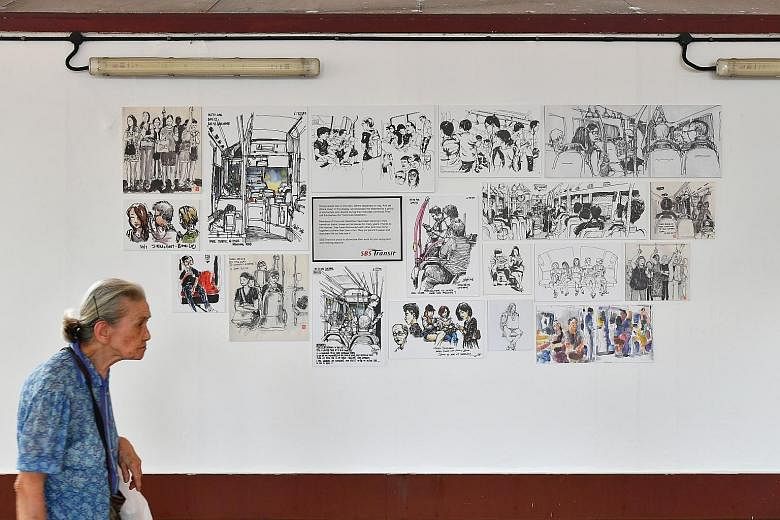Bus and rail operator SBS Transit reported a net profit after tax of $31.4 million for the full year ended Dec 31 - 88 per cent more than what it posted in the previous year.
SBST's performance was bolstered by higher rail ridership with the opening of Downtown Line 2 as well as a 27 per cent drop in fuel and power cost - its biggest cost component.
Total expenses, however, still ended 5.8 per cent higher at $1.06 billion, which was more than offset by revenue growing by 7.3 per cent to $1.1 billion.
Operating margin before taxes and amortisation expanded to 11.2 per cent, up from 10.8 per cent previously. Earnings per share stood at 10.12 cents, up from 5.41 cents. Net asset value per share was $1.35, up from $1.10.
For the year, SBST's bus services reflected eight months of fare revenue model and four months of bus contracting model. The latter is understood to yield better margins.
Despite a fare reduction implemented from Dec 27, 2015, the operator's bottom line grew on the back of improved commercial non- transit businesses and higher Downtown Line ridership, which soared by 190 per cent to 220,000 trips a day during the year.
-
AT A GLANCE
NET PROFIT: $31.4 million (+87.6%)
REVENUE: $1.1 billion (+7.3%)
DIVIDEND PER SHARE: 2.7 cents (157.1%)
Average daily ridership for the North-East Line grew by 5.2 per cent to 565,000 trips and that for the Sengkang-Punggol LRT by 15.3 per cent to 114,000 trips.
The group posted an operating profit of $2.7 million for its transit businesses, compared to an operating loss of $12.8 million for 2015.
Operating profit for its non-transit divisions grew by 3 per cent to $39.1 million.
As at Dec 31, the group had cash and bank balances of $4.3 million. After accounting for borrowings of $216 million, it had a net debt position of $211.7 million and a net gearing ratio of 50.7 per cent (down from 98.4 per cent in 2015). Gross gearing ratio was 51.7 per cent, down from 99.7 per cent.
Total assets fell by 3.3 per cent to $1,054.8 million because of a dip in non-current assets of $52.1 million, partially offset by an increase in current assets of $15.7 million. Total liabilities fell by 15.4 per cent to $636.8 million because of a drop in non-current liabilities of $171.1 million, partially offset by a $55.5 million rise in current liabilities.
SBST directors expect revenue for the current year to grow further with a full-year contribution under the bus contracting model, and continued growth in rail ridership. Costs, however, will also rise as the operator ramps up headcount in preparation for Downtown Line 3's opening, they add.
The directors are recommending a final dividend of 2.7 cents per share, up from 1.05 cents the year before.


